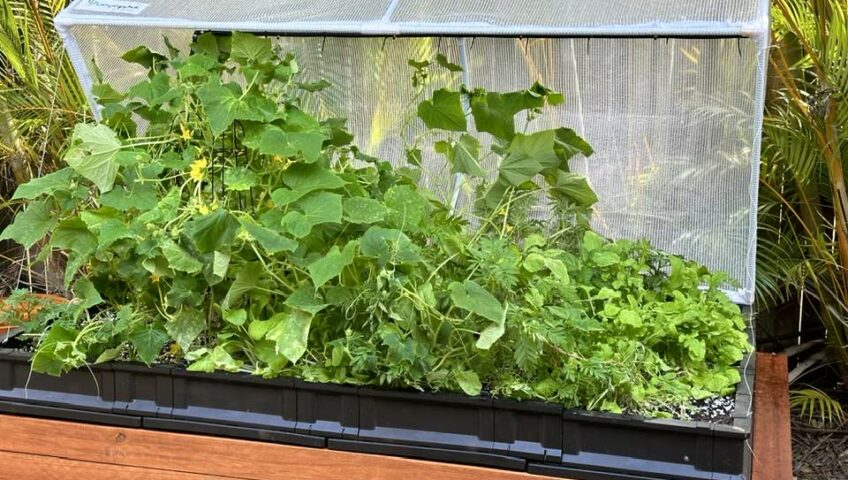Growing your own vegetables is not only rewarding but also a sustainable way to enjoy fresh produce right from your backyard or even a small balcony. Whether you’re a seasoned gardener or a complete novice, starting a vegetable garden is an accessible and fulfilling endeavor. Here’s a comprehensive guide to help you get started:
1. Choose a Suitable Location:
- Sunlight: Select a spot that receives at least 6-8 hours of direct sunlight daily. Most vegetables thrive in full sun.
- Space: Consider the size of your garden space or containers. Even small areas can accommodate vegetables with proper planning.
2. Prepare the Soil:
- Soil Quality: Ensure your soil is well-draining, nutrient-rich, and loose. Amend soil with compost or organic matter to improve fertility.
- pH Level: Test soil pH and adjust if necessary. Most vegetables prefer a slightly acidic to neutral pH (around 6.0-7.0).
3. Choose What to Grow:
- Beginner-Friendly Vegetables: Start with easy-to-grow vegetables like tomatoes, lettuce, radishes, carrots, and herbs such as basil and parsley.
- Consider Your Climate: Select vegetables that thrive in your region’s climate and growing season.
4. Plan Your Garden Layout:
- Spacing: Follow spacing recommendations on seed packets or plant tags to ensure proper growth and airflow.
- Companion Planting: Group plants that benefit each other, such as planting marigolds to deter pests or beans near corn for mutual support.
5. Start Seeds or Buy Seedlings:
- Seed Starting: Start seeds indoors several weeks before the last frost date or directly sow seeds into prepared garden beds or containers.
- Seedlings: Purchase healthy seedlings from nurseries or garden centers if you prefer to skip seed starting.
6. Planting Techniques:
- Depth and Spacing: Plant seeds at the recommended depth and space seedlings according to their mature size.
- Watering: Water newly planted seeds and seedlings gently and consistently to keep soil evenly moist until established.
7. Provide Care and Maintenance:
- Watering: Water deeply and regularly, especially during dry spells. Use mulch to conserve moisture and suppress weeds.
- Fertilizing: Feed plants with balanced fertilizer or compost tea throughout the growing season, following package instructions.
8. Pest and Disease Management:
- Monitor Regularly: Inspect plants for signs of pests or disease. Remove affected leaves or treat with organic methods such as neem oil or companion planting.
- Crop Rotation: Rotate crops annually to prevent soil-borne diseases and maintain soil fertility.
9. Harvesting and Enjoying Your Produce:
- Timing: Harvest vegetables at peak ripeness for best flavor and nutrition. Refer to specific harvest times for each crop.
- Storage: Store harvested vegetables properly in a cool, dry place or preserve them through canning, freezing, or drying.
10. Continuous Learning and Enjoyment:
- Gardening Resources: Explore gardening books, online resources, and local gardening clubs for ongoing learning and support.
- Share and Enjoy: Share your bounty with family and friends, and savor the satisfaction of growing your own nutritious and delicious vegetables.
Consider using a vegepod (as pictured), they are great to use. Starting a vegetable garden is a fulfilling journey that connects you with nature and provides healthy, homegrown food. With proper planning, care, and a bit of patience, everyone can experience the joys of cultivating their own garden oasis, no matter their level of gardening experience.

